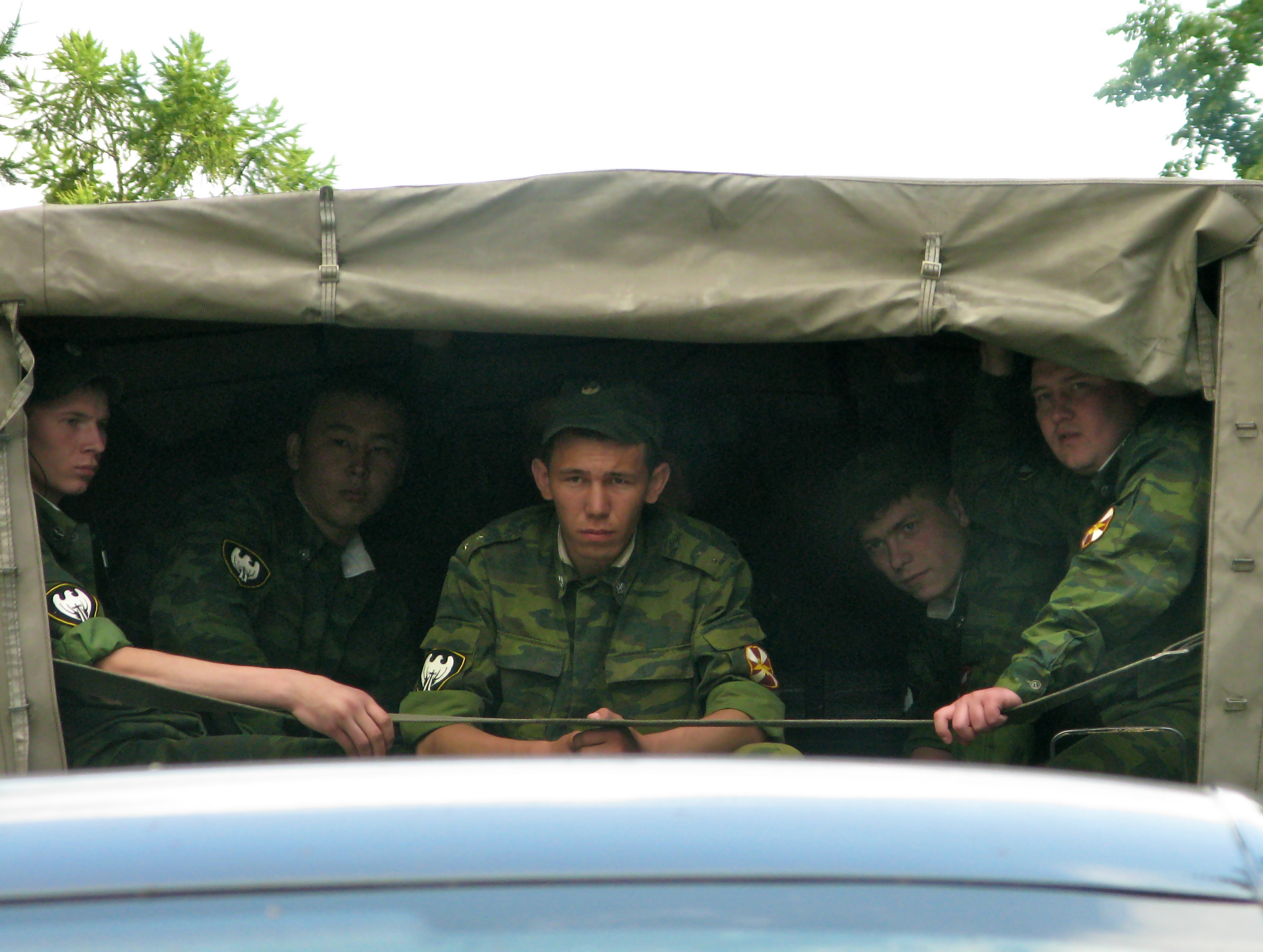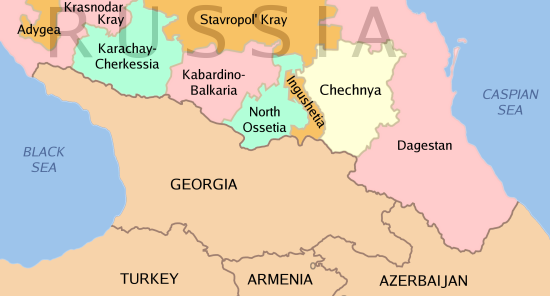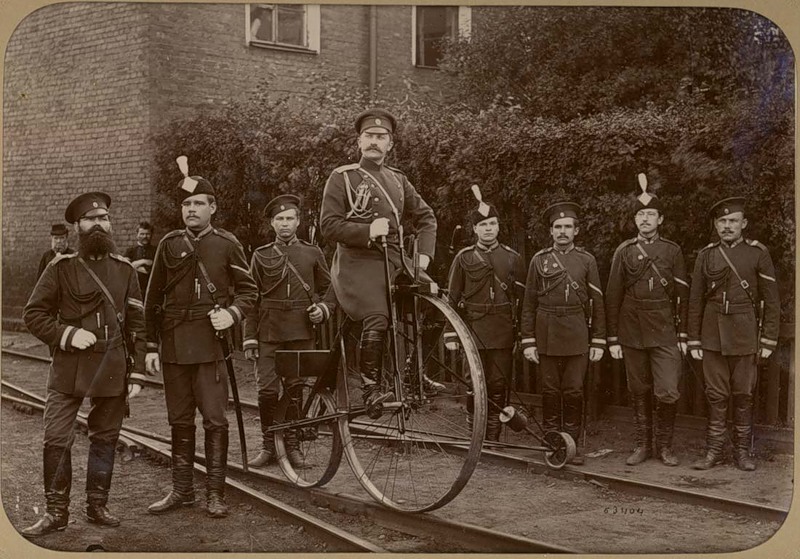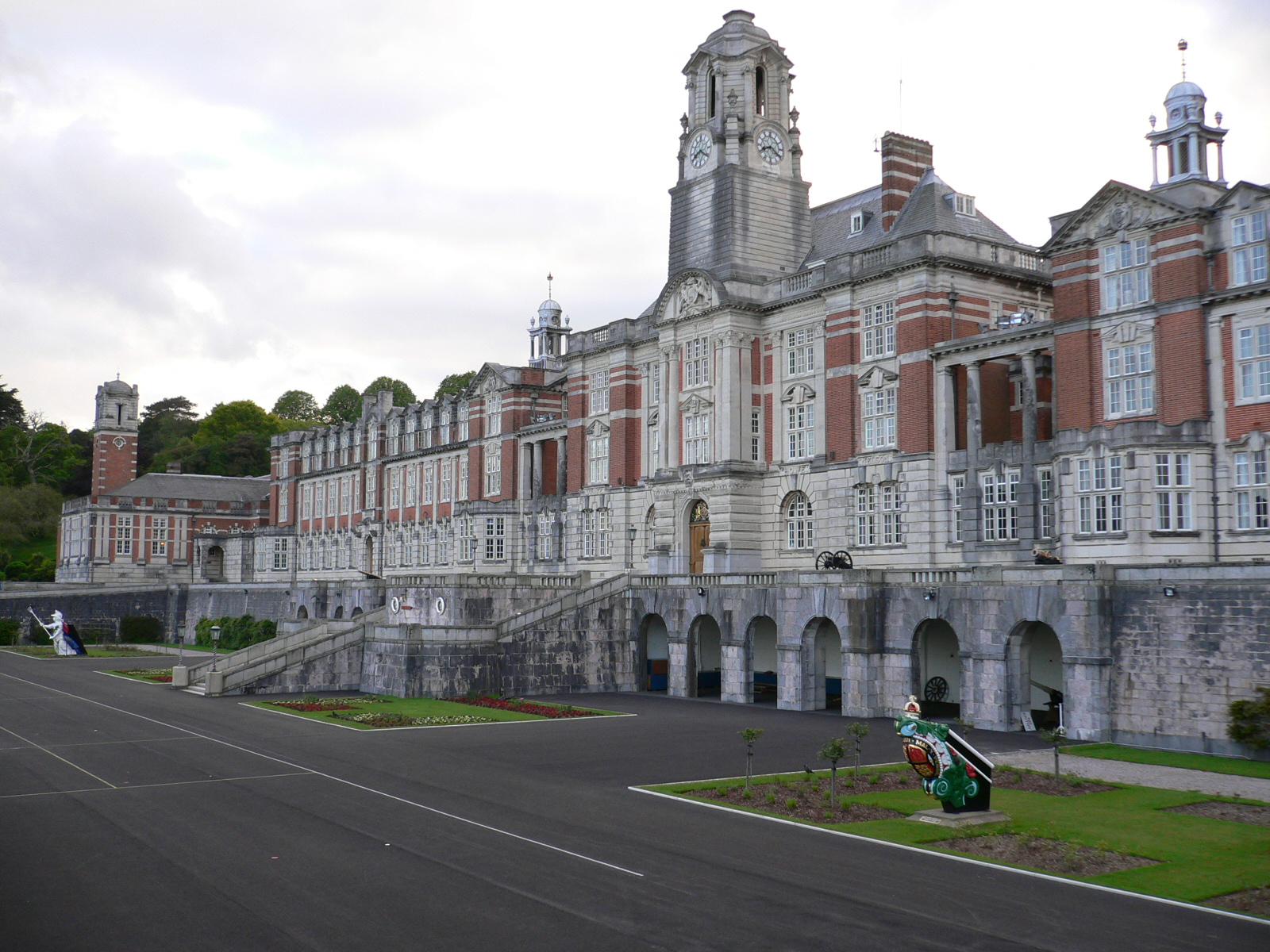|
Internal Troops (Russia)
The Internal Troops of the Ministry for Internal Affairs of the Russian Federation () was a paramilitary force of the Ministry of Internal Affairs of Russia from 1991 to 2016. The Internal Troops was a gendarmerie-like force that supported the Russian police, dealt with crowd control during riots and internal conflicts, and guarded highly-important facilities such as nuclear power plants. The Internal Troops was involved in all conflicts and violent disturbances in modern Russia, including the First and Second Chechen Wars, where it fell under direct military command during wartime and fulfilled missions of local defence and rear area security. The Internal Troops consisted of both volunteers and conscripts, which caused the number of active service members to fluctuate, with less than 200,000 upon their disestablishment from a peak strength of 350,000, and had experienced a shortage of officers since 1998. The final commander-in-chief of the Internal Troops was Colonel Gene ... [...More Info...] [...Related Items...] OR: [Wikipedia] [Google] [Baidu] |
Kremlin
The Moscow Kremlin (also the Kremlin) is a fortified complex in Moscow, Russia. Located in the centre of the country's capital city, the Moscow Kremlin (fortification), Kremlin comprises five palaces, four cathedrals, and the enclosing Moscow Kremlin Wall, Kremlin Wall along with the List of Moscow Kremlin towers, Kremlin towers. In the complex is the Grand Kremlin Palace, which was one of the royal residences of the Emperor of Russia, Tsar of Russia, and now is the residence of the President of Russia, president of the Russian Federation. The Moscow Kremlin overlooks the Moskva (river), Moskva River to the south, Saint Basil's Cathedral and Red Square to the east, and Alexander Garden to the west. In the Russian language, ''kremlin'' denotes a 'fortress within a city', and there are many historical cities with Kremlin of their own. However, the Moscow Kremlin, the best known, also serves an international-politics Metonymy, metonym that identifies the Government of Russia. D ... [...More Info...] [...Related Items...] OR: [Wikipedia] [Google] [Baidu] |
Second Chechen War
Names The Second Chechen War is also known as the Second Chechen Campaign () or the Second Russian Invasion of Chechnya from the Chechens, Chechen insurgents' point of view.Федеральный закон № 5-ФЗ от 12 января 1995 (в редакции от 27 ноября 2002) "О ветеранах" Historical basis of the conflict Russian Empire Chechnya is an area in the North Caucasus, Northern Caucasus which has constantly fought against foreign rule, including the Ottoman Turks in the 15th century. The Russian Terek Cossacks, Terek Cossack Host was established in lowland Chechnya in 1577 by free Cossacks who were resettled from the Volga to the Terek River. In 1783, the Russian Empire and the Georgia (country), Georgian Kingdom of Kartli-Kakheti signed the Treaty of Georgievsk, under which Kartli-Kakheti became a Russian protectorate. To secure communications with Georgia (country), Georgia and other regions of the Transcaucasia, the Russian Empire ... [...More Info...] [...Related Items...] OR: [Wikipedia] [Google] [Baidu] |
Imperial Russian Army
The Imperial Russian Army () was the army of the Russian Empire, active from 1721 until the Russian Revolution of 1917. It was organized into a standing army and a state militia. The standing army consisted of Regular army, regular troops and two forces that served on separate regulations: the Cossacks, Cossack troops and the Islam in Russia, Muslim troops. A regular Russian army existed after the end of the Great Northern War in 1721.День Сухопутных войск России. Досье [''Day of the Ground Forces of Russia. Dossier''] (in Russian). TASS. 31 August 2015. During his reign, Peter the Great accelerated the modernization of Russia's armed forces, including with a decree in 1699 that created the basis for recruiting soldiers, military regulations for the organization of the a ... [...More Info...] [...Related Items...] OR: [Wikipedia] [Google] [Baidu] |
Separate Corps Of Gendarmes
The Separate Corps of Gendarmes () was the uniformed security police of the Imperial Russian Army in the Russian Empire during the 19th and early 20th centuries. Its main responsibilities were law enforcement and Security agency, state security. The responsibilities of the Gendarmes also included the execution of court orders, pursuit of fugitives, riot control, and detainment of "unusual" criminals. Gendarmes could also be assigned to assist local police and officials. Establishment The precursors of the Corps were the Imperial Army Gendarmerie regiment (formed in 1815 and based on the Borisoglebsk Dragoon Regiment) and Gendarmerie units of the Separate Corps of the Internal Troops of Russia, Internal Guards (raised 1811). Following the 1825 Decembrist revolt, the new Russian Emperor, Nicholas I of Russia, Nicholas I, established the office of the Chief of Gendarmes in July 1826 and appointed General Alexander Khristoforovich Benkendorf, Count Alexander Benkendorf to it; all o ... [...More Info...] [...Related Items...] OR: [Wikipedia] [Google] [Baidu] |
Dissolution Of The Soviet Union
The Soviet Union was formally dissolved as a sovereign state and subject of international law on 26 December 1991 by Declaration No. 142-N of the Soviet of the Republics of the Supreme Soviet of the Soviet Union. Declaration No. 142-Н of the Soviet of the Republics of the Supreme Soviet of the Soviet Union, formally establishing the dissolution of the Soviet Union as a state and subject of international law. It also brought an end to the Soviet Union's federal government and General Secretary (also President) Mikhail Gorbachev's effort to reform the Soviet political and economic system in an attempt to stop a period of political stalemate and economic backslide. The Soviet Union had experienced internal stagnation and ethnic separatism. Although highly centralized until its final years, the country was made up of 15 top-level republics that served as the homelands for different ethnicities. By late 1991, amid a catastrophic political crisis, with several republics al ... [...More Info...] [...Related Items...] OR: [Wikipedia] [Google] [Baidu] |
Soviet Union
The Union of Soviet Socialist Republics. (USSR), commonly known as the Soviet Union, was a List of former transcontinental countries#Since 1700, transcontinental country that spanned much of Eurasia from 1922 until Dissolution of the Soviet Union, it dissolved in 1991. During its existence, it was the list of countries and dependencies by area, largest country by area, extending across Time in Russia, eleven time zones and sharing Geography of the Soviet Union#Borders and neighbors, borders with twelve countries, and the List of countries and dependencies by population, third-most populous country. An overall successor to the Russian Empire, it was nominally organized as a federal union of Republics of the Soviet Union, national republics, the largest and most populous of which was the Russian SFSR. In practice, Government of the Soviet Union, its government and Economy of the Soviet Union, economy were Soviet-type economic planning, highly centralized. As a one-party state go ... [...More Info...] [...Related Items...] OR: [Wikipedia] [Google] [Baidu] |
Internal Troops Of The Soviet Union
Internal Troops of the Ministry of Internal Affairs of the Soviet Union () were military formations (analogous to the gendarmerie), which were intended to ensure law and public order and internal security of the Soviet Union, protect state facilities, protect human and civil rights and freedoms from criminal and other illegal attacks, and ensure public safety. From September 1, 1939 to March 21, 1989, the Internal Troops were an integral part of the Soviet Armed Forces, but were subordinate to the Ministry of Internal Affairs of the Soviet Union. History During the Russian Civil War, the internal troops of the Cheka and the Red Army practiced the terror tactics of taking and executing numerous hostages, often in connection with desertions of forcefully mobilized peasants.Данилов, Виктор Петрович, Советская деревня глазами ВЧК — ОГПУ — НКВД. 1918—1922. — М., 1998. Со ссылкой на Российский гос ... [...More Info...] [...Related Items...] OR: [Wikipedia] [Google] [Baidu] |
Russian Soviet Federative Socialist Republic
The Russian Soviet Federative Socialist Republic (Russian SFSR or RSFSR), previously known as the Russian Socialist Federative Soviet Republic and the Russian Soviet Republic, and unofficially as Soviet Russia,Declaration of Rights of the laboring and exploited people, article I. was a socialist state from 1917 to 1922, and afterwards the largest and most populous Republics of the Soviet Union, constituent republic of the Soviet Union (USSR) from 1922 to 1991, until becoming a Declaration of State Sovereignty of the Russian SFSR, sovereign part of the Soviet Union with priority of Russian laws over Union-level legislation in 1990 and 1991, the last two years of the existence of the USSR.The Free Dictionary Russian Soviet Federated Socialist Republic< ... [...More Info...] [...Related Items...] OR: [Wikipedia] [Google] [Baidu] |
Interior Ministry
An interior ministry or ministry of the interior (also called ministry of home affairs or ministry of internal affairs) is a government department that is responsible for domestic policy, public security and law enforcement. In some states, the interior ministry is entrusted with the functions of ensuring national security, immigration issues and protecting places of detention. Structurally, an interior ministry is part of the highest bodies of executive power and reports directly to the head of government. In states with a federal structure, the ministry often has branches at the level of states or federal subjects. Lists of current interior ministries Named "ministry" * Ministry of Internal Affairs (Adygea) * Ministry of Interior Affairs (Afghanistan) * Ministry of Internal Affairs (Albania) * Ministry of Internal Affairs (Altai Republic) * Ministry of the Interior (Argentina) * Ministry of the Interior (Austria) * Ministry of Internal Affairs (Azerbaijan) * Ministr ... [...More Info...] [...Related Items...] OR: [Wikipedia] [Google] [Baidu] |
Russian Empire
The Russian Empire was an empire that spanned most of northern Eurasia from its establishment in November 1721 until the proclamation of the Russian Republic in September 1917. At its height in the late 19th century, it covered about , roughly one-sixth of the world's landmass, making it the list of largest empires, third-largest empire in history, behind only the British Empire, British and Mongol Empire, Mongol empires. It also Russian colonization of North America, colonized Alaska between 1799 and 1867. The empire's 1897 census, the only one it conducted, found a population of 125.6 million with considerable ethnic, linguistic, religious, and socioeconomic diversity. From the 10th to 17th centuries, the Russians had been ruled by a noble class known as the boyars, above whom was the tsar, an absolute monarch. The groundwork of the Russian Empire was laid by Ivan III (), who greatly expanded his domain, established a centralized Russian national state, and secured inde ... [...More Info...] [...Related Items...] OR: [Wikipedia] [Google] [Baidu] |
Colonel General
Colonel general is a military rank used in some armies. It is particularly associated with Germany, where historically General officer#Old European system, general officer ranks were one grade lower than in the Commonwealth and the United States, and was a rank above full , but below . The rank of colonel general also exists in the armed forces organized along the lines of the Soviet model, where it is comparable to that of a lieutenant general. Austria-Hungary In the Austro-Hungarian Army, the second-highest rank was colonel general (, ). The rank was introduced in 1915, following the German model. The rank was not used after World War I in the Austrian Federal Army, Austrian Army of the Republic. Kuk ColGen 1918.svg, Insignia of an Austro-Hungarian Army colonel general Hungary The rank of () is still used in Hungary. The rank replaced the ranks of (general of infantry), (general of cavalry), and (general of artillery) in the early 1940s. Since 1991, has been the hig ... [...More Info...] [...Related Items...] OR: [Wikipedia] [Google] [Baidu] |
Officer (armed Forces)
An officer is a person who holds a position of authority as a member of an Military, armed force or Uniformed services, uniformed service. Broadly speaking, "officer" means a commissioned officer, a non-commissioned officer (NCO), or a warrant officer. However, absent contextual qualification, the term typically refers only to a force's ''commissioned officers'', the more senior members who derive their authority from a Commission (document), commission from the head of state. Numbers The proportion of officers varies greatly. Commissioned officers typically make up between an eighth and a fifth of modern armed forces personnel. In 2013, officers were the senior 17% of the British armed forces, and the senior 13.7% of the French armed forces. In 2012, officers made up about 18% of the German armed forces, and about 17.2% of the United States armed forces. Historically armed forces have generally had much lower proportions of officers. During the First World War, fewer than ... [...More Info...] [...Related Items...] OR: [Wikipedia] [Google] [Baidu] |








